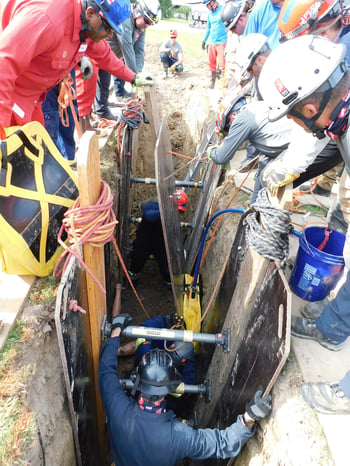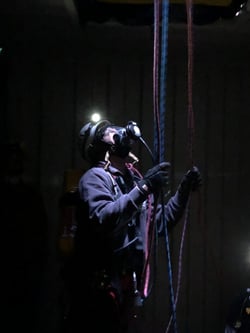 Many times, we hear teams say they don’t need to practice “on-air” rescue scenarios because their employees are not allowed to work in IDLH or low O2 areas. That always makes us ask, what about the confined spaces that have the potential for atmospheric hazards? What about those spaces that may unexpectedly become IDLH or low O2 – what then?
Many times, we hear teams say they don’t need to practice “on-air” rescue scenarios because their employees are not allowed to work in IDLH or low O2 areas. That always makes us ask, what about the confined spaces that have the potential for atmospheric hazards? What about those spaces that may unexpectedly become IDLH or low O2 – what then?
It's important to note that OSHA states that a confined space must only have the “potential to contain” a hazardous atmosphere to be considered a permit-required confined space, which requires rescue capabilities.
For these unexpected instances, do you have the appropriate rescue response in place? At Roco, we believe that not training your rescue team to respond to IDLH emergencies is like setting up an expensive home protection system and then not turning it on.
Rescuers need to be prepared for the worst – as well as the unexpected – should an atmospheric hazard develop within a space. This is just one of the reasons that permit spaces can be so deadly.
NIOSH Fatal Facts:
-
A little less than half the deaths from atmospheric conditions occurred in spaces that originally tested as being acceptable for entry. Something happens unexpectedly, and things go very wrong, very quickly.
-
Approximately 60% of all fatalities in confined space incidents where multiple fatalities occurred were “would be” rescuers.
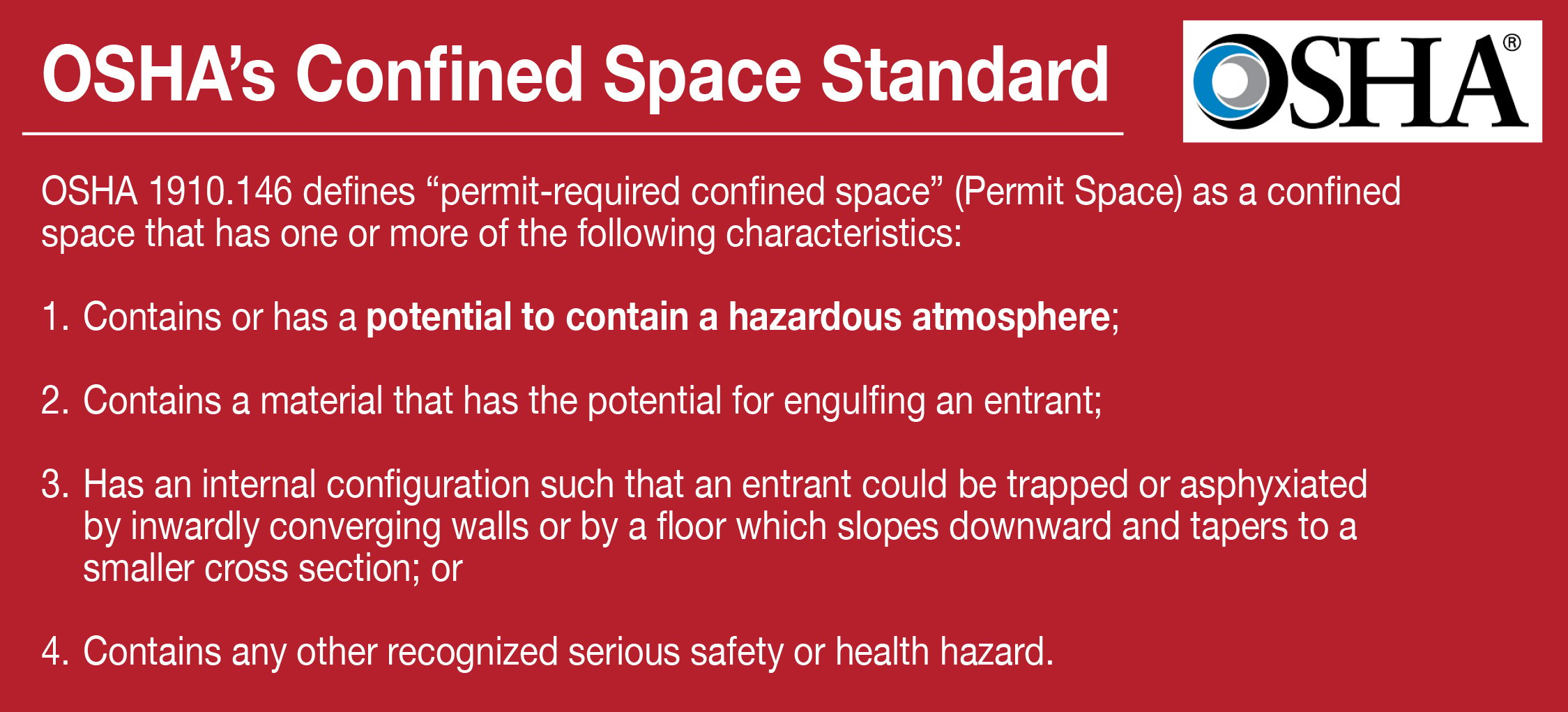
As rescuers, we need to be prepared for the worst case scenario as well as the unexpected! This is especially true when it comes to confined spaces.
Roco Courses With On-Air Confined Space Scenarios:
• URBAN/INDUSTRIAL RESCUE ESSENTIALS™
• URBAN/INDUSTRIAL RESCUE TEAM OPERATIONS™
• FAST-TRACK™ CONFINED SPACE AND ROPE TECHNICIAN
• FAST-TRACK™ CONFINED SPACE TECHNICIAN


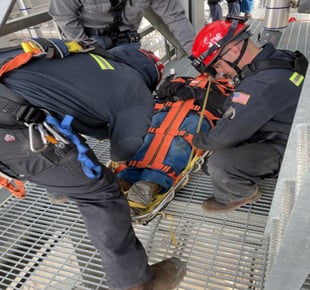
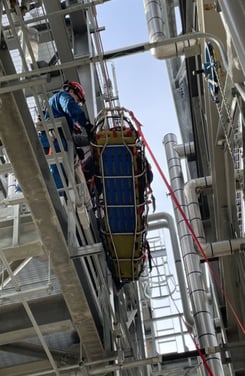 The rigging team accessed the deck above to set up a mainline and belay system. The anchor location provided a ready-made high point to assist with loading the patient over the edge. The rescue involved deploying the tried-and-true CMC MPD descent control device paired with an anchored Petzl ASAP, utilizing the rescue-rated Petzl Asap’Sorber Axess deceleration device. Tag lines were added, and the experienced rescue team lowered the patient to the ground where he was driven off-site for medical follow-up.
The rigging team accessed the deck above to set up a mainline and belay system. The anchor location provided a ready-made high point to assist with loading the patient over the edge. The rescue involved deploying the tried-and-true CMC MPD descent control device paired with an anchored Petzl ASAP, utilizing the rescue-rated Petzl Asap’Sorber Axess deceleration device. Tag lines were added, and the experienced rescue team lowered the patient to the ground where he was driven off-site for medical follow-up.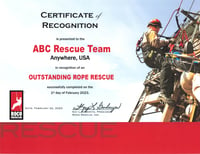

 CSU’s occupational safety and health faculty members selected McGlynn, who holds a bachelor’s degree in occupational safety and health. He is pursuing a master’s degree in the same field from the CSU. He has won several safety awards and was recently chosen to serve as president of the Baton Rouge ASSP chapter and on the group’s national advisory panel.
CSU’s occupational safety and health faculty members selected McGlynn, who holds a bachelor’s degree in occupational safety and health. He is pursuing a master’s degree in the same field from the CSU. He has won several safety awards and was recently chosen to serve as president of the Baton Rouge ASSP chapter and on the group’s national advisory panel.